Our Research Interests
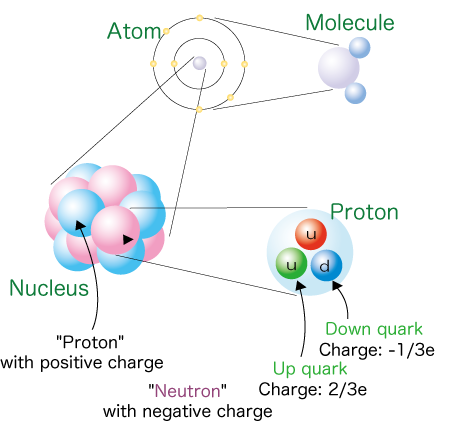
Considering all the matter in the universe as an assembly of elements, the most fundamental unit of the matter is atom. The nature of the atom is characterized by its nucleus, and all the elements in the universe were synthesized by nuclear reactions. The nuclear physics is, as it were, the field to explore the origin of the matter in the universe. We aim to elucidate the origin of the matter by experimental research into extremely rare phenomena inside nuclei and structures of exotic nuclei such as hyper nuclei or unstable nuclei far from stability.
Search for cluster states in atomic nulcei
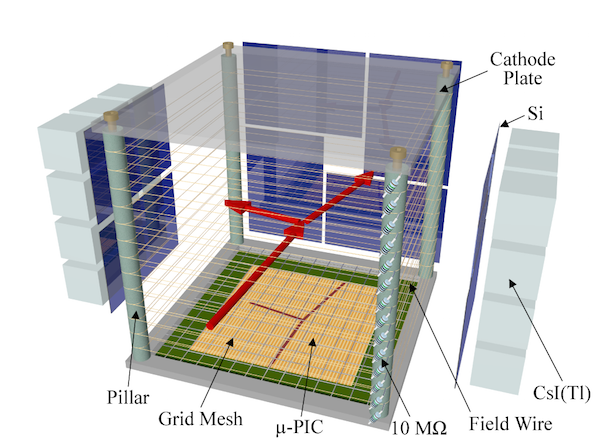
Curious states in which several nucleons strongly correlate with each
other to form cluster states.
For example, alpha condensed states where alpha clusters are condensed
into the lowest orbit were predicted in self-conjugate A = 4N nuclei
such as 12C and 24Mg. These states are
considered to be dilute states whose density is as low as 1/5 of
normal states, but no experimental evidence of the alpha condensed
states has never been found. In N ≠ Z nuclei, excess protons or
neutrons occupy molecular orbits among alpha clusters and cluster
molecules are expected to emerge. We develop the MAIKo active target
at Research Center for Nuclear Physics (RCNP), Osaka University and
search for cluster states in atomic nuclei.
Nucleosynthesis in the universe
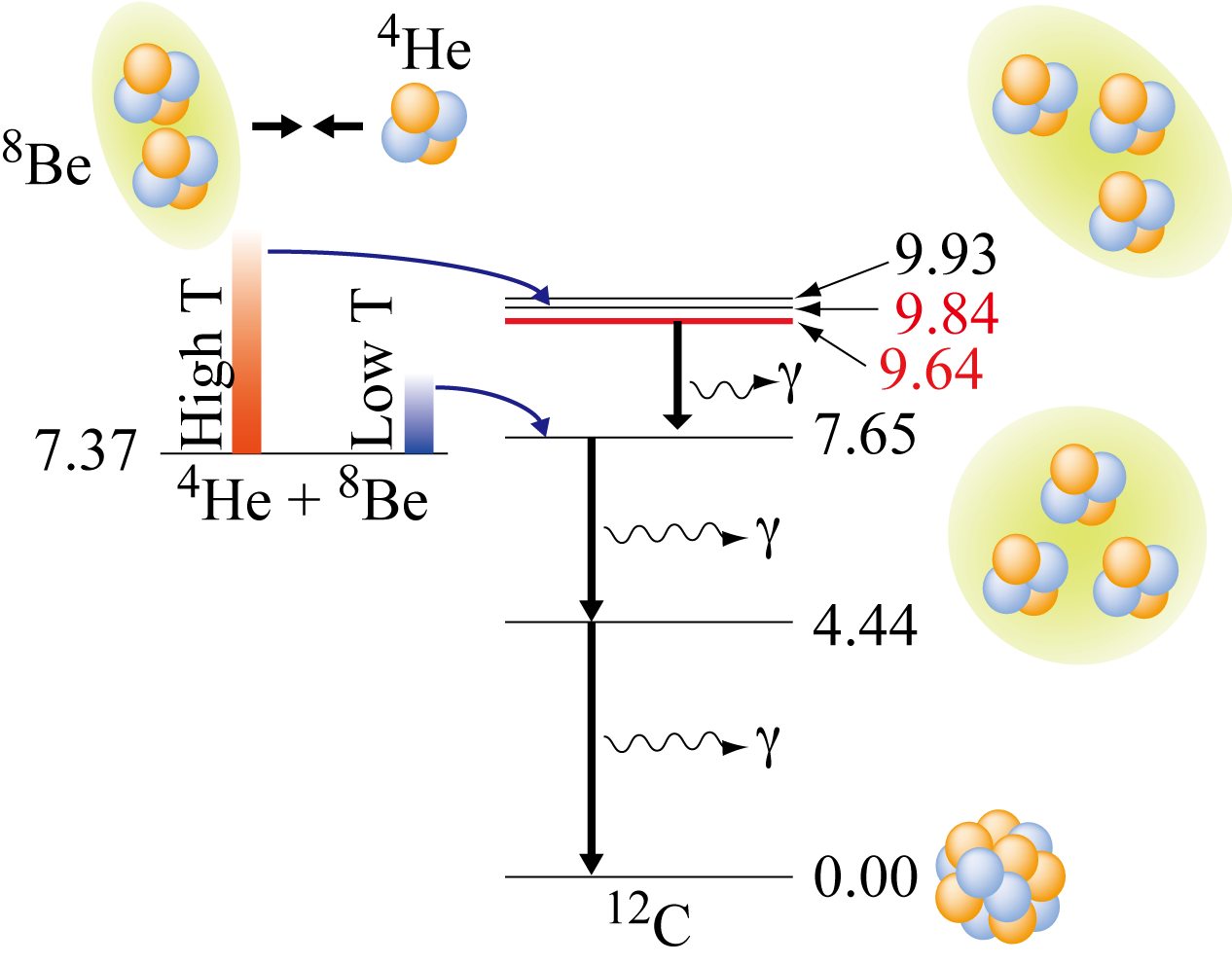
Just after our universe began about 13.8 billion years ago,
no element exist in the universe. All the elements in the
universe were synthesized by nuclear reactions in the
history of the universe.
For better understanding of the universe, nuclear reaction
rates for nucleosynthesis must be experimentally determined.
One of the most important reactions in the nucleosynthesis
is triple alpha reaction (left figure) that
synthesizes 12C from three alpha particles
(4He). We try to measure the triple alpha
reaction rate under at high temperature (High T).
Exotic structure in nuclei with high isospin and/or high spin
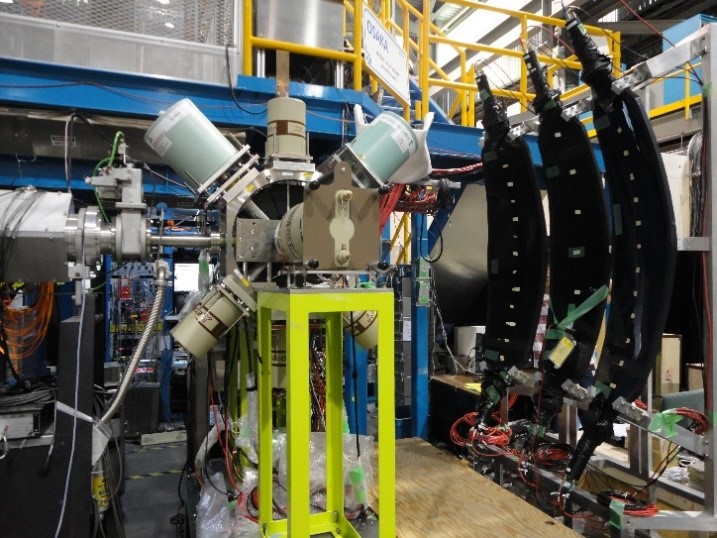
A nucleus, a many-body system of protons and neutrons governed by the
strong interaction, exhibits various types of structures such as shell
structure, collective structure, cluster structure, and so on. We
carry out a series of experiments to explore such exotic structures at
RCNP, Osaka University, at RIBF in RIKEN, and at TRIUMF
(left figure) in Canada.
Neutrino-less double beta decay for investigation of the matter dominated universe
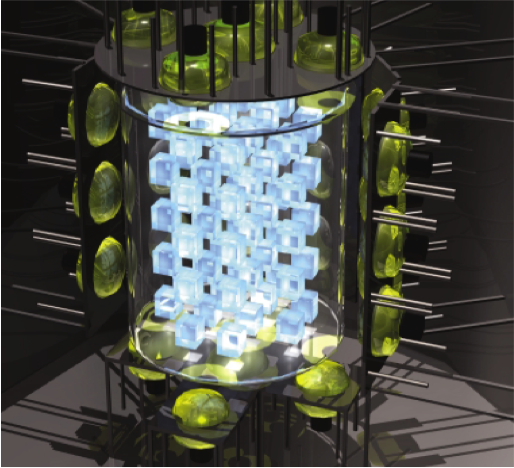
The neutrino-less double beta decay does not conserve the lepton
number before and after the decay (a violation of lepton number
conservation). This lepton number violating process is an important
key step toward explaining the evolution of the present
matter-dominated universe. We are developing a large detector system,
CANDLES (left figure), to search for the extremely rare neutrino-less double-beta
decay of 48Ca nuclei at the Kamioka underground laboratory, Gifu.
Study of nuclei with strangeness degree of freedom
- Investigation of generalized hadron-nucleus interaction -

We are studying hypernuclei which are nuclear systems contain
strange quarks. Hyper nuclei provide an insight into the generalized
hadron-nucleus interaction to describe the inner structure of neutron
stars as a hypernuclear matter. We are preparing an experiment to
study hypernuclei at J-PARC, Ibaraki. A photograph of the
K1.8 beam line at J-PARC is shown in the left figure.
Nuclear structure studies by means of reaction cross sections and nuclear electromagnetic moments
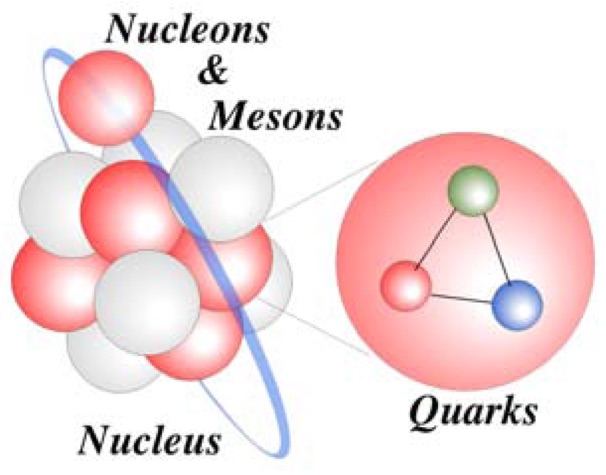
For exotic (unstable) nuclei which have unbalanced numbers of protons and neutrons,
we are investigating their nuclear structures through measurements of nuclear radii
of proton (neutron) distributions or electromagnetic moments. For example, for
neutron-rich nuclei, the radius of neutron-distribution should be a little bit larger
than that of proton-distribution, for which the difference is called neutron skin.
The neutron-skin thickness is considered to be deeply related to some astrophysical
problems such as the structure of neutron star and supernova explosion, etc.
Also the above information on nuclear structures will contribute to solve the puzzle
of nucleosynthesis in the universe or that of symmetries in nature such as
time-reversal symmetry that leads to the creation of matter in the universe.
Materials science by means of the β-NMR and μSR
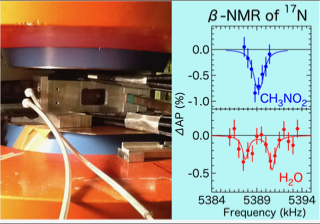
Because of the parity violation in the weak interaction, electrons or positrons
emitted via the nuclear beta decay or the muon decay show asymmetric angular
distribution relative to the direction of spin. This property enables us to use
unstable nuclei and muons as an extremely high sensitive probe to the electromagnetic
field inside materials and then can be quite useful for materials science. The
left picture shows an equipment of the beta-ray detected nuclear magnetic resonance
(β-NMR) at NIRS-HIMAC in Chiba, Japan and recent results on the precise β-NMR
spectra of short-lived nucleus 17N in liquid materials of
nitrometane (CH3NO2) and water (H2O) using a spin
polarized 17N beam. We are now aiming at identifying chemical species
of nitrogen ions formed via implantation into liquids. Behavior of hydrogen atoms
in hydrogen storage materials are being studied using the technique of muon spin
rotation/relaxation (μSR) at muon facilities in various countries.

